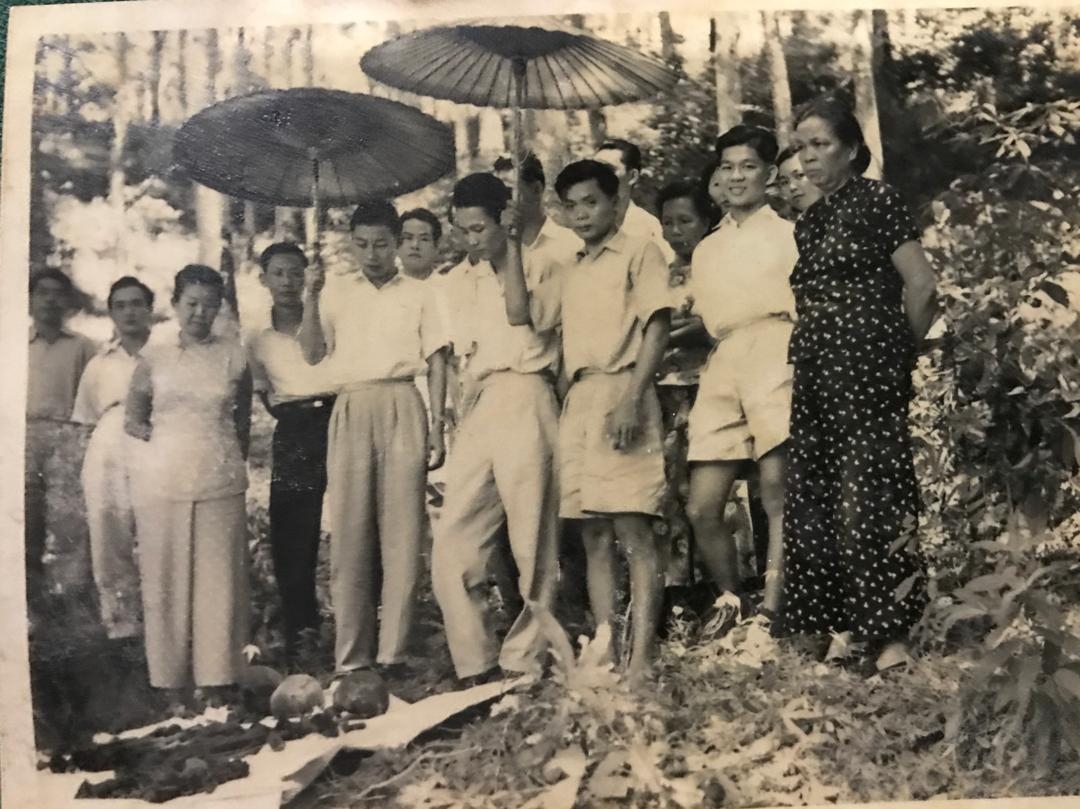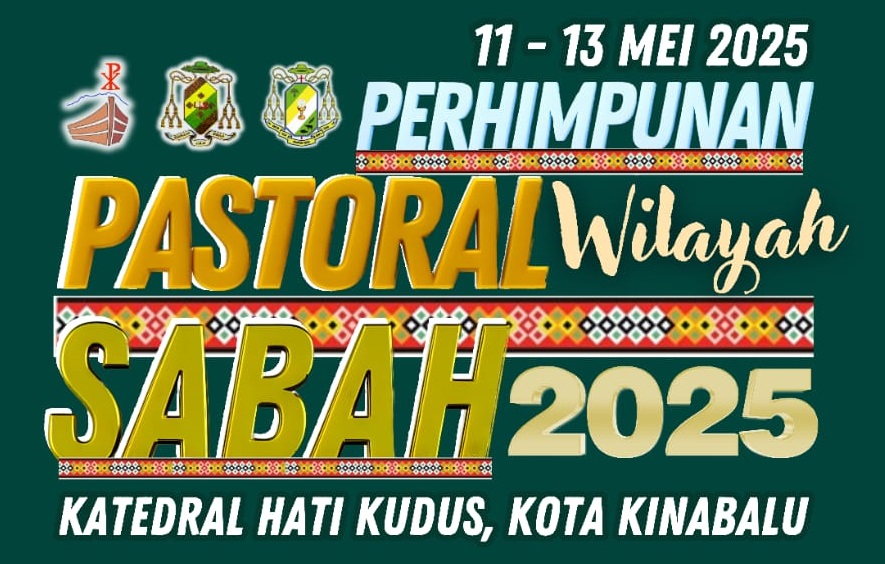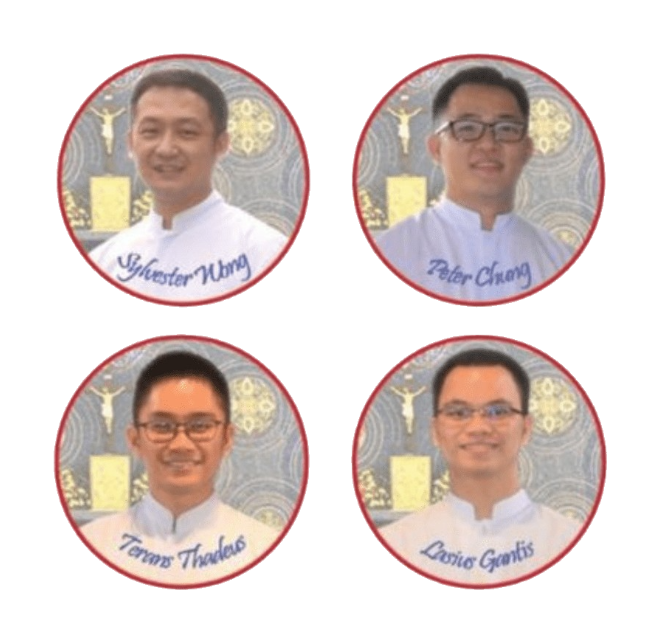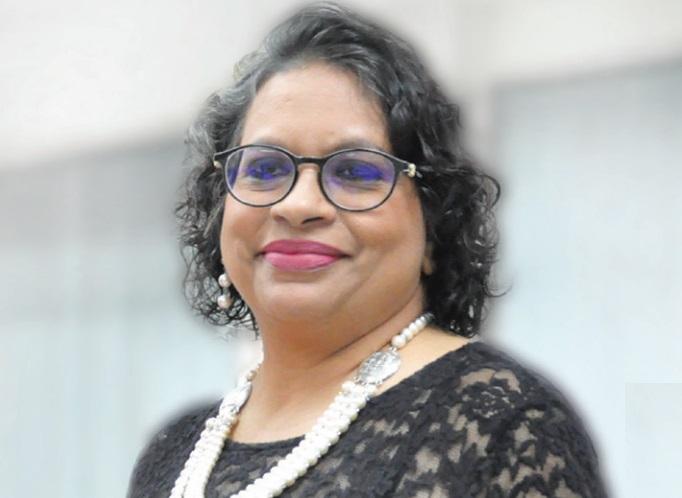Remembering eight brave war heroes from WWII (Part 2)

During the annual 2018 official ceremony for all war victims Jan 21, eight men’s names were commemorated on a new plaque at the main war monument at the Petagas War Memorial Park. This is the second installment of a write-up to remember particularly six men out of the eight, with the perspective on how their Catholic faith had helped them to survive life’s ordeals.
In the second war crime charge, the four victims Paul Lee Fook Onn @ Paul Lee Onn, Simon Thien, Paul Chong Pin Sin and Stephen Pan Tet Liong lived in Tamparuli during the war. The war crime charge stated they were “native residents, chief of the village and very influential.”
SIMON THIEN and Paul Lee Onn shared some land that they applied for in Tamparuli, across from Charlie Peter’s property. Simon was also one of the Fr Weber’s ‘old boys’ from Sacred Heart School as was Charlie. He worked in the Customs as senior officer collecting taxes at the port. He was married to Hiew Nyet Kiao and they had three adopted children Agnes, Rose, and John. He is survived by his siblings, nephews, and nieces.
PAUL CHONG PIN SIN was born in 1903 and came to Jesselton in the 1920s from China and worked as a “house-mate” for “orang putih.” With the little savings and experience he had from working with them, he first started a ‘laundromat,’ then moved on to trading and became a successful merchant owning a grocery shop in Jesselton town.
A written account by his only surviving child, Rose Chong states that in 1944 a troop of Japanese army marched from Sandakan to Ranau, and reached their house which was near the roadside at Tamparuli. The Japanese army stayed at their house where they required Paul Chong, Simon Thien, Stephen Pan and Paul Lee to supply food and other rations to them.
PAUL LEE FOOK ONN @ PAUL LEE ONN was the first born of three children to parents Anthony Lee Biang and Maria Liew Fung Kiao in Jesselton in 1902. He worked as a chief clerk at Harrisons and Crossfields Shipping. When his father fell ill and eventually died at a young age, his mother sent them to mission schools. Paul was also a former student of Sacred Heart School under Fr Weber. Church records show he was a devoted Catholic and prominent lay leader particularly of the Chinese congregation of Sacred Heart Church in the 1920s and 1930s.
Like Vitalianus Ubing, Paul Lee was also a volunteer with the North Borneo Volunteer Force and was ranked a Sergeant. After the war, the family received a scroll commemorating and honouring his sacrifice. Paul was the father of nine children. His wife was pregnant with their youngest son John when he was taken away and killed. Today, his six surviving children live around the globe.
BUNG AH TEE @ STEPHEN PAN TET LIONG previously worked at the British rubber estate in Sandakan as supervisor and owned a rubber estate in Bakut, near Tuaran. According to his grandson, Stephen’s family was originally from Papar and he was educated at St Joseph mission school, Papar. He was married to Francisca Chin Kon Kiao, and they had ten children.
As with the other families, because of safety Stephen moved his family to Tamparuli. The Pan family lived very near to the other three Chinese families at Tamparuli and became good friends. He was appointed as village Chief or as Kapitan at one time.
In 1945, all four men were captured by the Japanese and never returned. The reason behind the capture was that all the four men’s names were found on the Defender (undercover) list of names. They were accused of, “not supplying the Japanese army with foodstuffs, planning to attack the Japanese in the rear in the event of an Allied landing and in contact with bandits in Kinarut, and to attack the Japanese units which came from Ranau to Tamparuli.” (War crime trial proceedings)
After the Japanese surrendered, the Australian army caught the Japanese and they went house to house to find out how many victims were missing and forced the Japanese to tell where those innocent victims were killed and buried. It was then they knew Paul Chong, Simon Thien, and Stephen Pan were killed together on June 12 at the same place and their bodies shared the same burial ground.
Three months after the killing, the families followed a map given by someone and located the ground in the Telipong area. They recognised and confirmed the bodies by means of personal possessions which were with the remains. However, nothing much could be done then as life was difficult for the families and no one could afford to do anything with the remains. Twelve years later, the three families got together again and transferred all the three men’s remains into a burial jar which was then buried at the Tuaran Christian Cemetery.
Paul Lee was taken away on a separate day while the family was having dinner. He was taken away, badly tortured and returned home twice prior to his final departure on June 16. Although a map of his killing place was also provided by the same person (as mentioned above) months later but sadly, the remains of Paul have never been found.
Out of adversity comes strength, sometimes formidable strength and courage. After the death of Paul Lee, his widow Margaret Liong Choi Chin, like the other three widows in Tamparuli, struggled to bring up their children. The widows got together to form a strong support network.
Due to constant floods, the children were often prevented from going to school, which was located on the other side of the river. So Margaret, with the help from the widows and older children of the families, decided to raise funds to build a school for the children who lived on the south side of the river – about 20 of them from their own families alone. The boys led a Dragon Dance team and the girls sold handmade paper flowers. They went everywhere by bus or on foot. Margaret went as far as Labuan to raise funds for the school.
Their children were first schooled in Charlie Peter’s house in 1946.The families also gathered at the house on Sundays for service or Mass, if there was a priest visiting. Apparently, faith has put the families together and helped them survived through the difficult times.
While going through the hardships of raising funds, the school had to shift to an old Japanese warehouse when the number of students grew too big for Charlie’s house. In 1949, they had to move again to an abandoned two-storey attap house on the land between the properties of Paul Lee and Simon Thien. After some persuasive negotiations between Margaret and the land owner, they bought the land on which the Gong Gao School grew and rebuilt.
Being nearly illiterate, Margaret sought the help of Yong Tao Pin @Yong Chen Koon, who was educated in China, with the school’s administrative work. Meanwhile, Mrs Simon Thien, affectionately known as Nyet Kiao Ji, her sister Fook Kiao, wife of Paul Chong, and others helped with chores and the never-ending fundraising.
In the late 1950s the school was handed over to Father Tepstra who was in charge of the Tuaran Catholic mission. Around 1964, the school became known as St Philip’s School, under the care of Bishop James Buis. The school is very much in operation today and has educated many successful students.
The third war crime charge involved the killing of Lim Hock Beng and Mohinder Singh. They were the two non-Catholics who were also recently commemorated at the Petagas War Memorial Park.
LIM HOCK BENG was working as a wireless operator at the Jesselton Post Office. He was considered the “chief of the rebellion who used the wireless set to catch intelligence that was against the Japanese army and carried out an agitation to the native residents”. According to a family member, Lim Hock Beng was a Christian belonging to the Society for the propagation of the Gospel, now known as the Anglican Church. His wife was Rose Walker, a Catholic, who was also a close family friend of Lothar Manjaji’s wife, Otillia. With the untimely death of Lim Hock Beng, the children were separated. The two eldest, Lucy and Richard were sent to stay in the convent in Singapore where they were taught Catechism and subsequently they and their families became Catholics. The other three siblings, Jane, Victor, and Timothy studied in St Mary’s School, Sandakan where they were also taught catechism and accepted the Catholic faith.
MOHINDER SINGH, a 19-year old male nurse at the Jesselton Hospital, assisted Lim Hock Beng in keeping an eye out for enemy planes using his binoculars. They were captured and killed around early July 1945 and buried unceremoniously together in a shallow grave. Both bodies were later exhumed and taken away by their families.
Many gaps in the stories of these brave men remain and it is hoped more will be uncovered as the families embark on learning about their loved ones. Their story, set against a backdrop of the cruelties of the war and the horrific suffering they must have endured show how only their unwavering faith must have given them courage in their greatest hour of need, surrendering to God their lives and the families they were leaving behind. They also bring to mind the many other brave victims who were taken and killed during the war.
“Have I not commanded you? Be strong and courageous. Do not be afraid for the Lord your God will be with you wherever you go.” Joshua 1:9-10 – Contributed by Vera Chin and Susanna Lye, granddaughters of Lothar Manjaji and Paul Lee.



